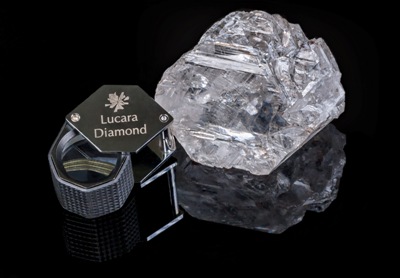The Globe and Mail is Canada’s national newspaper with the second largest broadsheet circulation in the country. It has enormous influence on Canada’s political and business elite.
Lucara Diamond Corp.’s stock soared by as much as 37 per cent after the Vancouver miner said it had unearthed the biggest diamond to be found in more than a century.
The 1,111-carat, gem-quality stone is slightly smaller than a tennis ball. It was dug out of Lucara’s Karowe mine in Botswana.
The diamond, the second-largest in history, is one of several giant finds that the company has recently uncovered. Lucara, part of the mining and energy group headed by Lukas Lundin, also reported it had found an 813-carat stone that ranks as the sixth-largest ever discovered.























